
Alpine Majesty and Cultural Splendor in Munich, Salzburg, & Hallstatt
 7 Day Tour of Munich and Salzburg
7 Day Tour of Munich and Salzburg
Overview
Trip Map
Itinerary
Inclusions
Reviews







7 Days 6 Nights
Best Time: Jan-Dec
Outdoor Activities
Nature Lovers
Combine the tranquility of alpine peaks and lakes and the grandeur of Baroque architecture in a 7-day journey through Munich, Salzburg, and Hallstatt. Enjoy private guided explorations of Munich and Salzburg's historic cores, unlocking tales of culture, music, and history. Marvel at fairy-tale Neuschwanstein Castle, soak in the beauty of Lake Chiemsee, and wander through Hallstatt, a postcard-perfect village. You'll have multiple opportunities for hikes that can be easy or challenging as you wish, and other outdoor activities like swimming. It will be easy with the help of detailed travel guidance provided in your itinerary and mobile app.
- Take excursions to Neuschwanstein Castle & Lake Chiemsee, enjoying breathtaking views & easy hikes.
- Discover Salzburg on a guided tour including the Salzburg Cathedral and the Mirabell Palace Gardens.
- Explore Hallstatt nestled between spectacular mountains and a serene but stunning lake.
- Learn Munich's history on a guided walk, then relax in traditional beer gardens.
- Enjoy hikes above Salzburg on the Mönchsberg and in the nearby Alps on the peak of the Untersberg.
Combine the tranquility of alpine peaks and lakes and the grandeur of Baroque architecture in a 7-day journey through Munich, Salzburg, and Hallstatt. Enjoy private guided explorations of Munich and Salzburg's historic cores, unlocking tales of culture, music, and history. Marvel at fairy-tale Neuschwanstein Castle, soak in the beauty of Lake Chiemsee, and wander through Hallstatt, a postcard-perfect village. You'll have multiple opportunities for hikes that can be easy or challenging as you wish, and other outdoor activities like swimming. It will be easy with the help of detailed travel guidance provided in your itinerary and mobile app.
- Take excursions to Neuschwanstein Castle & Lake Chiemsee, enjoying breathtaking views & easy hikes.
- Discover Salzburg on a guided tour including the Salzburg Cathedral and the Mirabell Palace Gardens.
- Explore Hallstatt nestled between spectacular mountains and a serene but stunning lake.
- Learn Munich's history on a guided walk, then relax in traditional beer gardens.
- Enjoy hikes above Salzburg on the Mönchsberg and in the nearby Alps on the peak of the Untersberg.

Old Town
Architecture

Residence Palace
Castles & Chateaux

Deutsches Museum
Museums & Galleries

The English Gardens
Parks & Gardens

Oktoberfest
Cultural

Hohensalzburg Fortress
Castles & Chateaux

Old Town
Architecture

Mirabell Palace & Gardens
Parks & Gardens

Hellbrunn Palace
Castles & Chateaux
Must see sights

Old Town
Architecture

Residence Palace
Castles & Chateaux

Deutsches Museum
Museums & Galleries

The English Gardens
Parks & Gardens

Oktoberfest
Cultural

Hohensalzburg Fortress
Castles & Chateaux

Old Town
Architecture

Mirabell Palace & Gardens
Parks & Gardens

Hellbrunn Palace
Castles & Chateaux
Starting from
$1635
per person
 Not included
Not included Secure Your Customizable Trip
Enter your details to embark on a journey that can be tailored just for you.
Start
Travelers
Add Room
Remove Room
Preferred Hotel Stars
Craft Your Own Itinerary
Select your interests and destinations for a trip plan inspired by you.
Trip Map & Itinerary
Enable/Disable Map Scrolling
Click To Make Map Interactive

Trip Timeline
 Edit Details
Edit DetailsArrival
3 nights
Munich
Germany
Train: 1.5h
3 nights
Salzburg
Austria
Departure
Day-By-Day Itinerary

Day 1
Arrive Munich
View More
Day 1
Arrive Munich



To Be Determined
Arrival in Munich Airport and Transfer by Taxi or Train
Munich has one main airport, Munich International Airport, where almost all visitors arrive. Taxis are available directly at the terminal exit, or you can arrange a private transfer for added convenience. The cheapest and fastest way to reach central Munich from is by train. The regional "S-bahn" trains delivers you from the airport train station (just follow the signs) directly to Munich's main station (München hbf) in the center of the city, from where you can easily hail a taxi that will be much less expensive than from the airport.

Day 1
Arrive Munich
View More


Day 1
Arrive Munich




To Be Determined:
Transfer from Airport
Mid-Day/Afternoon:
Residence Palace
Late Afternoon:
Altstadt


Day 2
Munich
View More
Day 2
Munich


9:00 AM - 11:30 AM
Guided Walk Tour of Historic Munich
Munich contains many reminders of a long and varied history but also encompasses the modern features of a strong and vibrant city. The insights of a local help make sense of the traditions, trends, and promises of Bavaria's Capital - sometimes referred to as the city of laptops and lederhosen. On this tour, your guide will show you the highlights of Munich and point out the many hidden treasures.

Day 2
Munich
View More


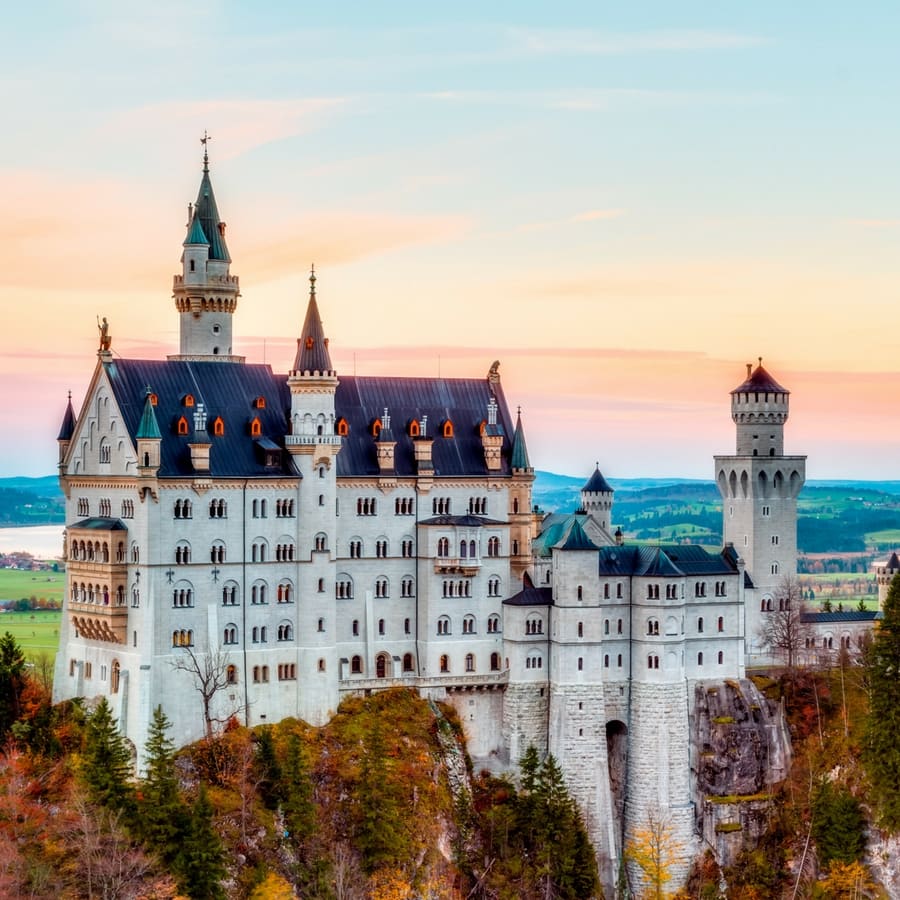
Day 3
Munich
View More
Day 3
Munich


Early Morning to Afternoon
Self Guided Excursion to Neuschwanstein Castle
An inspiration for the Disney Castles, numerous fairy tales, and countless dreamers, the Castle of Neuschwanstein is perhaps the most famous castle in the world. The eccentric Bavarian King Ludwig II created this amazing palace in the 19th century as an idyllic version of a medieval castle. You can visit by taking a guided tour from Munich or traveling independently by train and bus. In addition to enjoying spectacular views you can take a guided tour of the castle interior which is well worth the experience (but keep in mind that there a lots of steps to negotiate). If traveling independentally, be sure to book your interior tour reservations at least two days in advance.

Linderhof Palace
Stop by King Ludwig II's smallest palace on your way to Neuschwanstein and explore its delightful gardens.
Show More

Mary's Bridge
Enjoy a stunning view of the castle while suspended over a mountainous gorge.
Show More

Linderhof Palace
Stop by King Ludwig II's smallest palace on your way to Neuschwanstein and explore its delightful gardens.
Show More

Mary's Bridge
Enjoy a stunning view of the castle while suspended over a mountainous gorge.
Show More

Linderhof Palace
Stop by King Ludwig II's smallest palace on your way to Neuschwanstein and explore its delightful gardens.
Show More

Mary's Bridge
Enjoy a stunning view of the castle while suspended over a mountainous gorge.
Show More
prev
next

Day 3
Munich
View More


Linderhof Palace
 Highlight of Excursion to Neuschwanstein Castle
Highlight of Excursion to Neuschwanstein CastleStop by King Ludwig II's smallest palace on your way to Neuschwanstein and explore its delightful gardens.
Another of the eccentric (some say mad) King Ludwig II's creations is Linderhof Palace, which with its fantastic grotto and Moorish pavilion testifies to the king's vision. The smallest of his three palaces that he built, it is the only one that he lived to see completed. The palace is in between Munich and Neuschwanstein, meaning many tours stop there along the way.
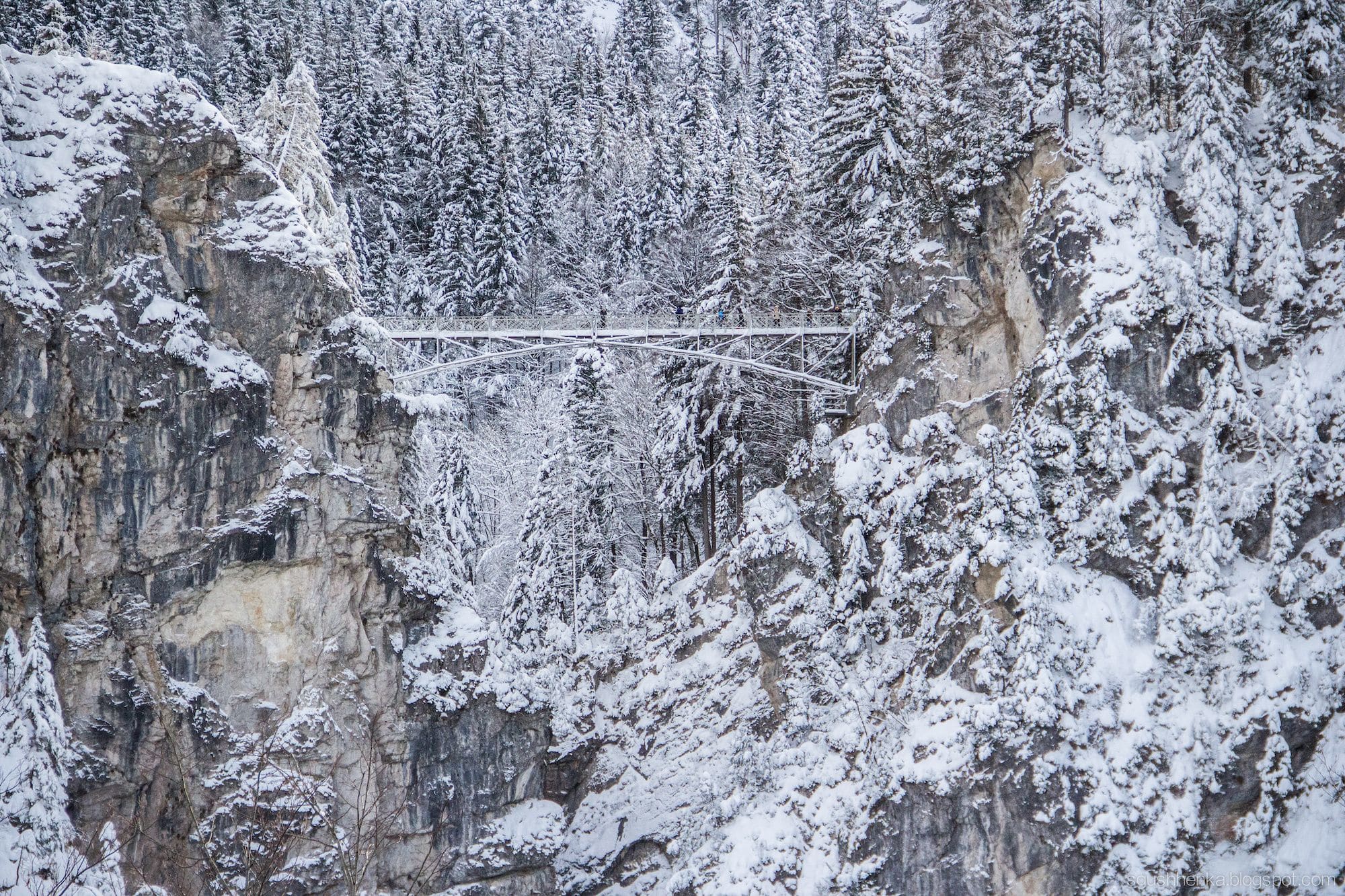
Mary's Bridge
 Highlight of Excursion to Neuschwanstein Castle
Highlight of Excursion to Neuschwanstein CastleEnjoy a stunning view of the castle while suspended over a mountainous gorge.
You definitely won't want to miss taking in the best views and photographs of Neuschwanstein from Marienbrücke (Mary's Bridge) over the dramatic Pöllat Gorge. The minibus terminal is very close at just 5 min walk away, while it's a steepish 10-15min climb on a wide and well-groomed path to get there from behind the castle. As noted above, Mary's Bridge can get a little crowded, so you might have to wait for a gap before you can fit on.

Linderhof Palace
 Highlight of Excursion to Neuschwanstein Castle
Highlight of Excursion to Neuschwanstein CastleStop by King Ludwig II's smallest palace on your way to Neuschwanstein and explore its delightful gardens.
Another of the eccentric (some say mad) King Ludwig II's creations is Linderhof Palace, which with its fantastic grotto and Moorish pavilion testifies to the king's vision. The smallest of his three palaces that he built, it is the only one that he lived to see completed. The palace is in between Munich and Neuschwanstein, meaning many tours stop there along the way.

Mary's Bridge
 Highlight of Excursion to Neuschwanstein Castle
Highlight of Excursion to Neuschwanstein CastleEnjoy a stunning view of the castle while suspended over a mountainous gorge.
You definitely won't want to miss taking in the best views and photographs of Neuschwanstein from Marienbrücke (Mary's Bridge) over the dramatic Pöllat Gorge. The minibus terminal is very close at just 5 min walk away, while it's a steepish 10-15min climb on a wide and well-groomed path to get there from behind the castle. As noted above, Mary's Bridge can get a little crowded, so you might have to wait for a gap before you can fit on.

Linderhof Palace
 Highlight of Excursion to Neuschwanstein Castle
Highlight of Excursion to Neuschwanstein CastleStop by King Ludwig II's smallest palace on your way to Neuschwanstein and explore its delightful gardens.
Another of the eccentric (some say mad) King Ludwig II's creations is Linderhof Palace, which with its fantastic grotto and Moorish pavilion testifies to the king's vision. The smallest of his three palaces that he built, it is the only one that he lived to see completed. The palace is in between Munich and Neuschwanstein, meaning many tours stop there along the way.

Mary's Bridge
 Highlight of Excursion to Neuschwanstein Castle
Highlight of Excursion to Neuschwanstein CastleEnjoy a stunning view of the castle while suspended over a mountainous gorge.
You definitely won't want to miss taking in the best views and photographs of Neuschwanstein from Marienbrücke (Mary's Bridge) over the dramatic Pöllat Gorge. The minibus terminal is very close at just 5 min walk away, while it's a steepish 10-15min climb on a wide and well-groomed path to get there from behind the castle. As noted above, Mary's Bridge can get a little crowded, so you might have to wait for a gap before you can fit on.
prev
next

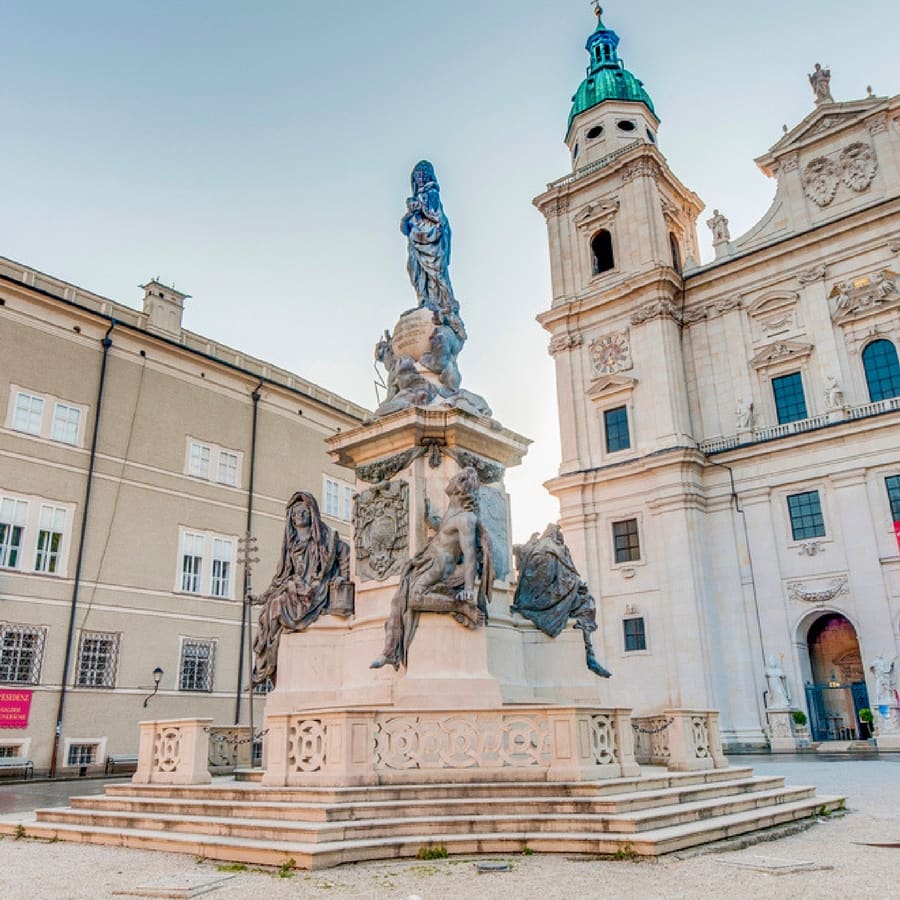
Day 4
Munich to Salzburg
View More
Day 4
Munich to Salzburg






8:30 AM
Transfer to Station by Taxi or Public Transport or Walk
Most trains depart from Müchen Hbf station, the largest station in the city. Before spending money on a transfer, be sure to check whether your hotel is within easy walking distance. Also consider that public transport is the cheapest and sometimes fastest option. If staying at a hotel, they can order a reliable taxi. Some private transfers will even help with your bags. Uber is also available for those with the app.

Day 4
Munich to Salzburg
View More



Day 5
Salzburg
View More
Day 5
Salzburg


Early Morning to Late Afternoon
Excursion to Hallstatt
Hallstatt is one of the most picturesque settings in Austria. The tiny town is wedged between the shores of a pristine alpine lake and dramatic mountains rising directly behind it. In addition to being blessed with an amazing setting, Hallstatt was made prosperous from nearby salt mines. The wealth from salt mining financed many impressive historic buildings as well, which now make the town even more picturesque.

Salt Mines of Hallstatt
Go to the top of the mountain in order to descend deep into its depths within ancient mines.
Show More

Hallstatt Skywalk
Experience an absolutely exhilarating view over Hallstatt.
Show More

Beinhaus
Enter the burial chamber of Hallstatt's ancestors.
Show More

Salt Mines of Hallstatt
Go to the top of the mountain in order to descend deep into its depths within ancient mines.
Show More

Hallstatt Skywalk
Experience an absolutely exhilarating view over Hallstatt.
Show More

Beinhaus
Enter the burial chamber of Hallstatt's ancestors.
Show More

Salt Mines of Hallstatt
Go to the top of the mountain in order to descend deep into its depths within ancient mines.
Show More
prev
next

Day 5
Salzburg
View More


Salt Mines of Hallstatt
 Highlight of Hallstatt
Highlight of HallstattGo to the top of the mountain in order to descend deep into its depths within ancient mines.
Hallstatt was made prosperous from nearby salt mines, but mining was important even in pre-historic times. A funicular railway is located near the town, which leads to a panoramic viewing platform and to the ancient salt mine, which is still in operation and can be toured today.
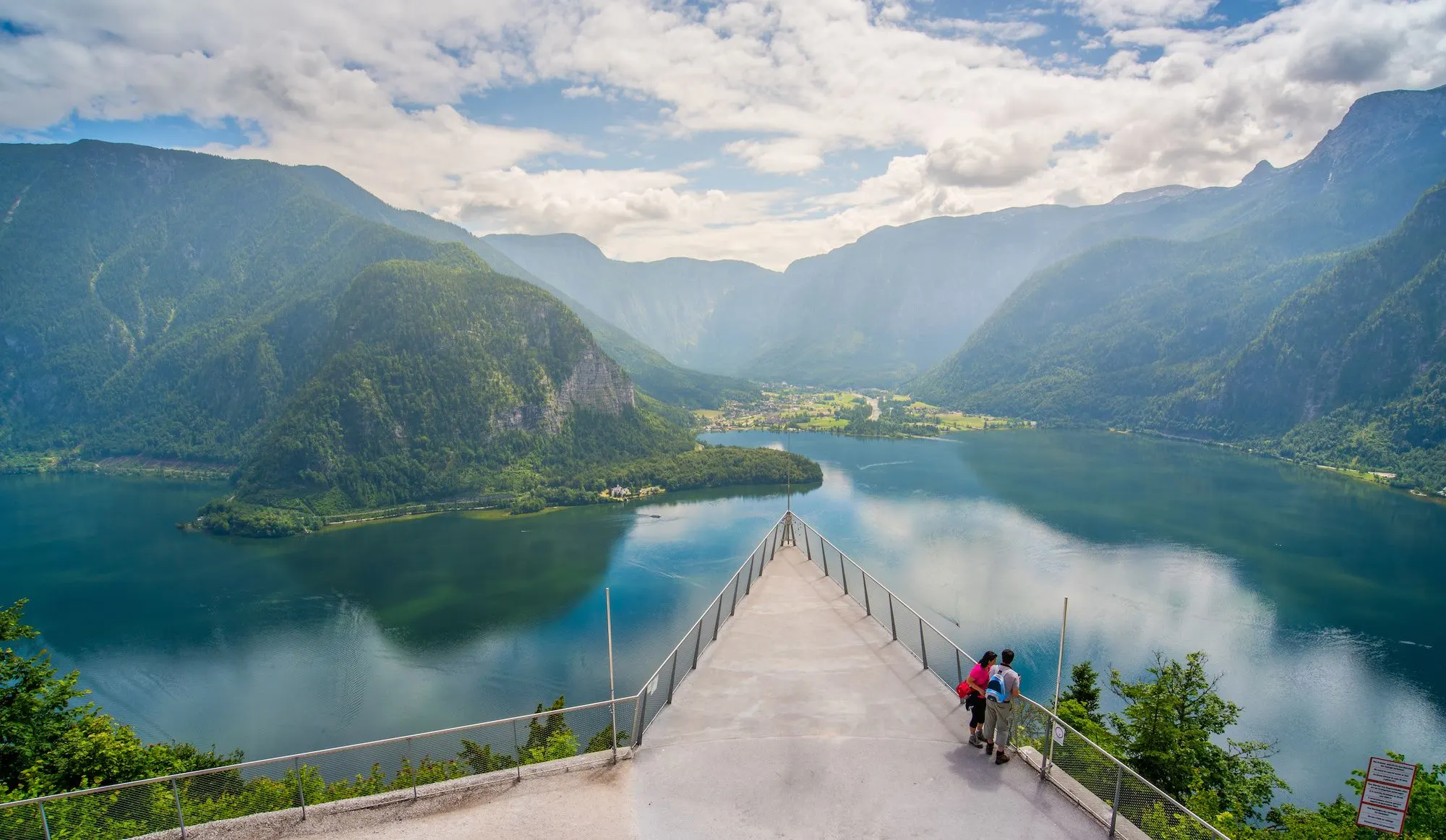
Hallstatt Skywalk
 Highlight of Hallstatt
Highlight of HallstattExperience an absolutely exhilarating view over Hallstatt.
The Hallstatt Skywalk is reached via the same funicular railway that leads to the Salt Mines. The viewing platform hangs over thin air, making the view absolutely unforgettable.
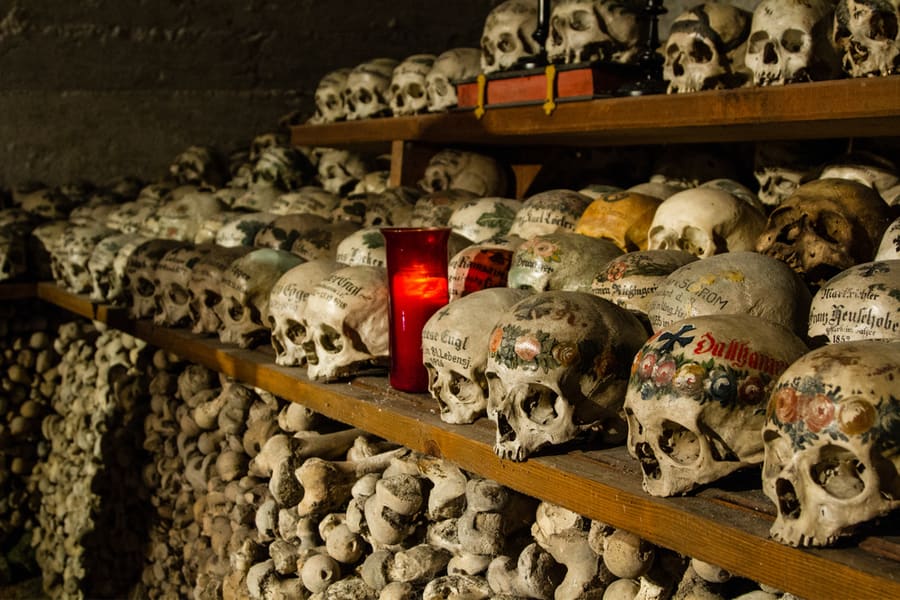
Beinhaus
 Highlight of Hallstatt
Highlight of HallstattEnter the burial chamber of Hallstatt's ancestors.
Hallstatt long ago ran out of room for burials, so in the Middle Ages they began exhuming bodies after approximately 15 years and then stacking the bones in the Beinhaus (i.e. bone house) in St. Michael's chapel, freeing up room for more burials. The bones are treated respectfully – it is not meant as a house of horrors but as a way of dealing with the land scarcity. Eventually, they even began to paint the skulls with flowers to symbolize the wreaths traditionally laid on graves.

Salt Mines of Hallstatt
 Highlight of Hallstatt
Highlight of HallstattGo to the top of the mountain in order to descend deep into its depths within ancient mines.
Hallstatt was made prosperous from nearby salt mines, but mining was important even in pre-historic times. A funicular railway is located near the town, which leads to a panoramic viewing platform and to the ancient salt mine, which is still in operation and can be toured today.

Hallstatt Skywalk
 Highlight of Hallstatt
Highlight of HallstattExperience an absolutely exhilarating view over Hallstatt.
The Hallstatt Skywalk is reached via the same funicular railway that leads to the Salt Mines. The viewing platform hangs over thin air, making the view absolutely unforgettable.

Beinhaus
 Highlight of Hallstatt
Highlight of HallstattEnter the burial chamber of Hallstatt's ancestors.
Hallstatt long ago ran out of room for burials, so in the Middle Ages they began exhuming bodies after approximately 15 years and then stacking the bones in the Beinhaus (i.e. bone house) in St. Michael's chapel, freeing up room for more burials. The bones are treated respectfully – it is not meant as a house of horrors but as a way of dealing with the land scarcity. Eventually, they even began to paint the skulls with flowers to symbolize the wreaths traditionally laid on graves.

Salt Mines of Hallstatt
 Highlight of Hallstatt
Highlight of HallstattGo to the top of the mountain in order to descend deep into its depths within ancient mines.
Hallstatt was made prosperous from nearby salt mines, but mining was important even in pre-historic times. A funicular railway is located near the town, which leads to a panoramic viewing platform and to the ancient salt mine, which is still in operation and can be toured today.
prev
next

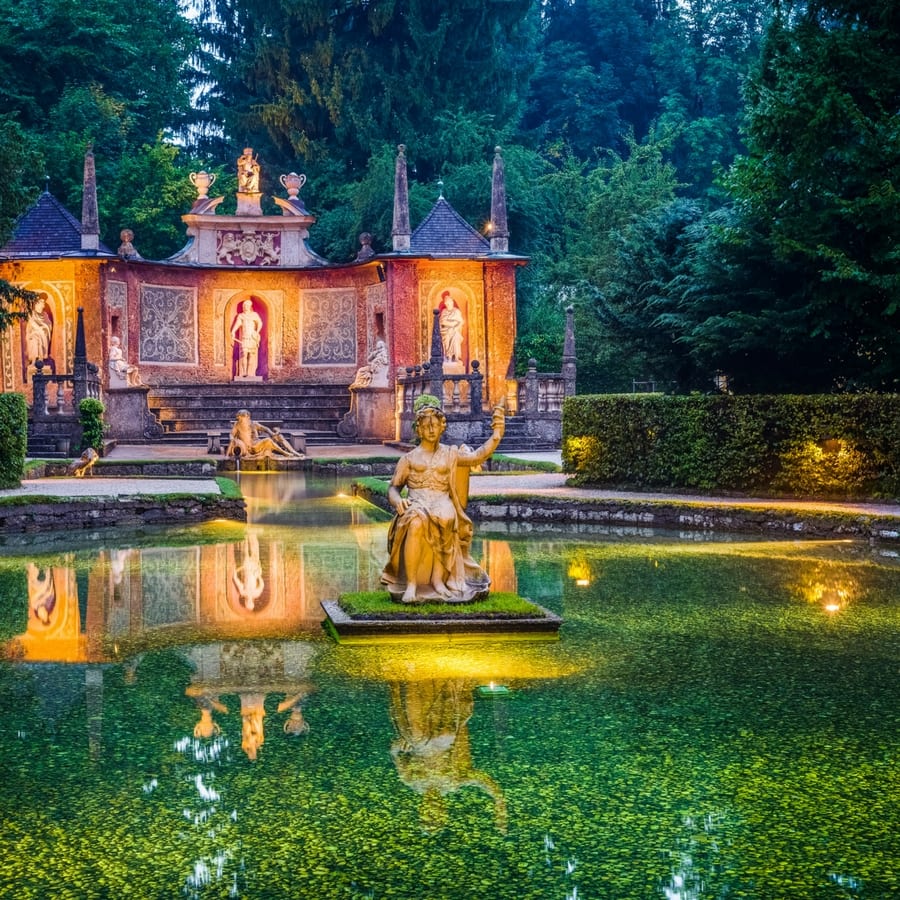
Day 6
Salzburg
View More
Day 6
Salzburg



Morning/Mid-Day
Visit the Hellbrunn Palace and Gardens
Built as a summer palace by Salzburg's Prince-Bishop, the Hellbrunn Palace is a picturesque palace surrounded by even more beautiful gardens. The early baroque palace was built exclusively for the purpose of entertainment, as the Prince-Bishop would actually return to Salzburg in the evening. It can be toured with an audio guide and includes several beautiful frescoed ceilings. There is a great deal to discover in the gardens - hidden grottos, clever statues, reflecting pools, as well as flora and fauna. And the trick fountains are a must for every visit. Both the transportation (bus #25) and the entry are covered by the Salzburg Card.

Trick Water Fountains
Get a little wet in this delightful garden of tricks.
Show More

Trick Water Fountains
Get a little wet in this delightful garden of tricks.
Show More

Trick Water Fountains
Get a little wet in this delightful garden of tricks.
Show More

Trick Water Fountains
Get a little wet in this delightful garden of tricks.
Show More

Trick Water Fountains
Get a little wet in this delightful garden of tricks.
Show More
prev
next

Day 6
Salzburg
View More

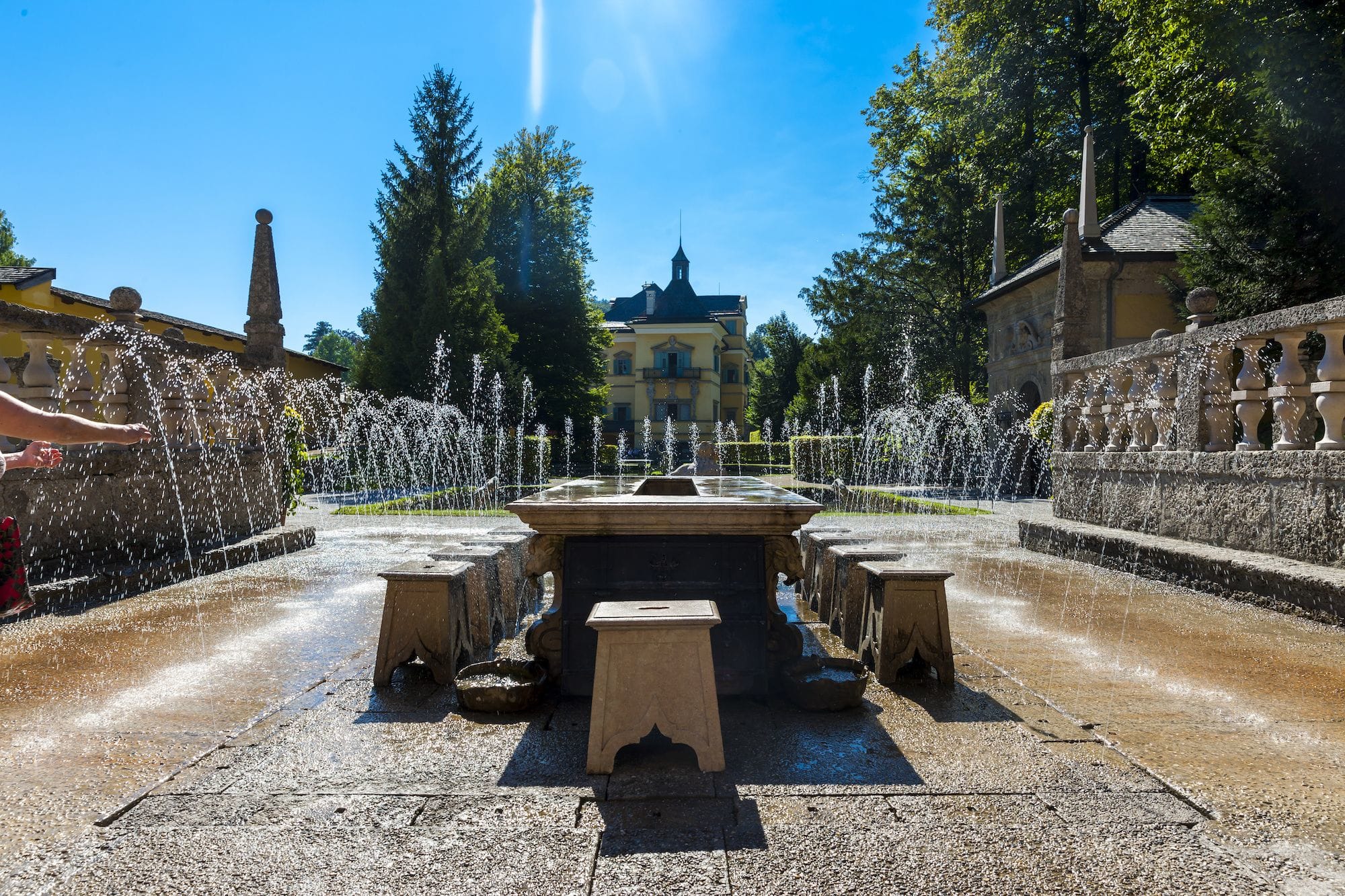
Trick Water Fountains
 Highlight of Hellbrunn Palace
Highlight of Hellbrunn PalaceGet a little wet in this delightful garden of tricks.
The famous "Wasserspiele" are trick water fountains that never fail to delight, astonish, and befuddle. The fountains were actually built with the express purpose of playing practical jokes on guests, and they continue to provide plenty of amusement today.

Trick Water Fountains
 Highlight of Hellbrunn Palace
Highlight of Hellbrunn PalaceGet a little wet in this delightful garden of tricks.
The famous "Wasserspiele" are trick water fountains that never fail to delight, astonish, and befuddle. The fountains were actually built with the express purpose of playing practical jokes on guests, and they continue to provide plenty of amusement today.

Trick Water Fountains
 Highlight of Hellbrunn Palace
Highlight of Hellbrunn PalaceGet a little wet in this delightful garden of tricks.
The famous "Wasserspiele" are trick water fountains that never fail to delight, astonish, and befuddle. The fountains were actually built with the express purpose of playing practical jokes on guests, and they continue to provide plenty of amusement today.

Trick Water Fountains
 Highlight of Hellbrunn Palace
Highlight of Hellbrunn PalaceGet a little wet in this delightful garden of tricks.
The famous "Wasserspiele" are trick water fountains that never fail to delight, astonish, and befuddle. The fountains were actually built with the express purpose of playing practical jokes on guests, and they continue to provide plenty of amusement today.

Trick Water Fountains
 Highlight of Hellbrunn Palace
Highlight of Hellbrunn PalaceGet a little wet in this delightful garden of tricks.
The famous "Wasserspiele" are trick water fountains that never fail to delight, astonish, and befuddle. The fountains were actually built with the express purpose of playing practical jokes on guests, and they continue to provide plenty of amusement today.
prev
next

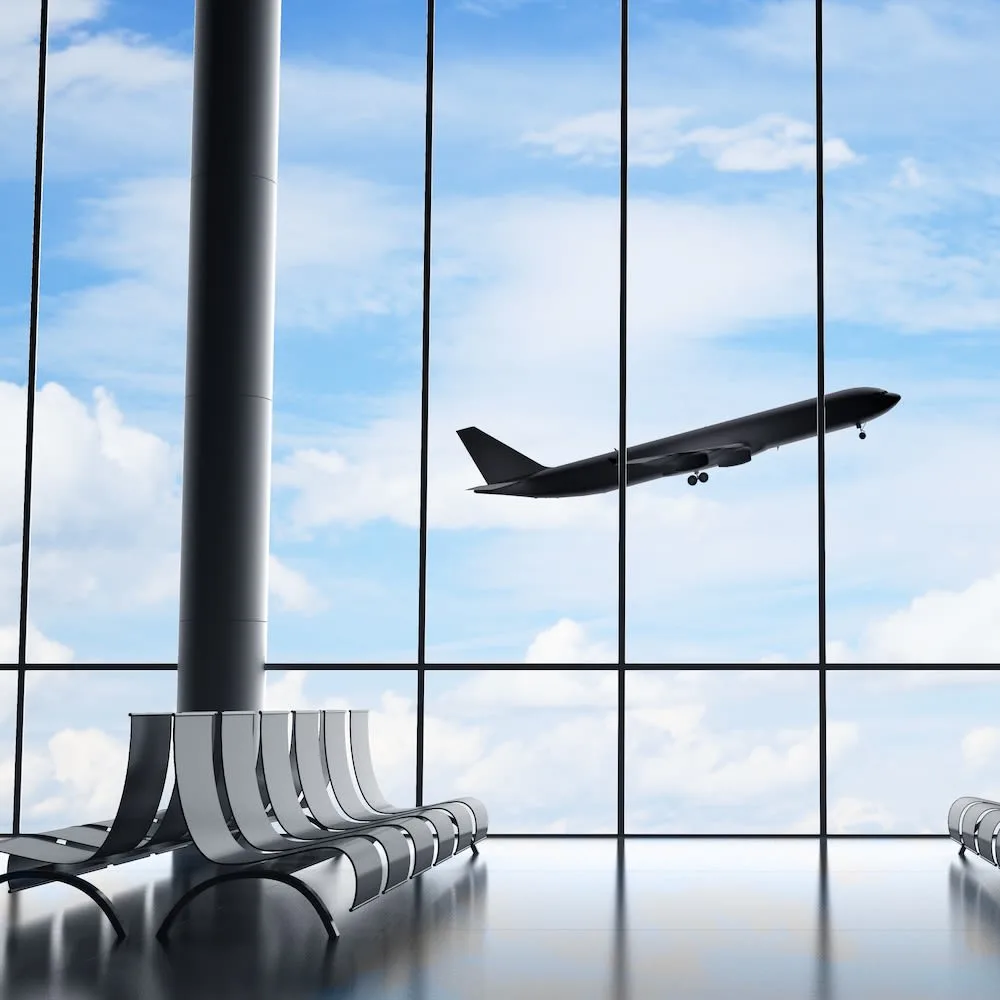
Day 7
Depart Salzburg
View More
Day 7
Depart Salzburg

To Be Determined
Transfer to Airport
Salzburg has one main airport, Salzburg Airport, although many depart from nearby Munich Airport (see below). Your hotel can arrange a reliable taxi or if you have the app, Uber is also a good option. You can also arrange a private transfer. If you are picked up about 2.5 hours before your departure time, you should arrive at the airport with a little over two hours to spare, depending on traffic. If you are leaving during rush hour, you may want to budget an extra fifteen minutes. Keep in mind though that Salzburg Airport is a very small airport, so you may end up departing from Munich instead. The Munich airport has its own rail station, making it easy to take an approximately 2-hour train ride from Salzburg.

Day 7
Depart Salzburg
View More


What's Included In Your Trip

Pre-Paid Tours and Activities:
- Guided Walk Tour of Historic Munich
- Guided Walking Tour of Salzburg
- City Card for Munich, including discounts to many popular attractions

Pre-Paid Transportation:
- 2nd Class Train Tickets from München Hbf to Salzburg Hbf
- Public Transport Tickets for Munich

Accommodation:
- 4 nights at a hotel of your choice in Munich
- 4 nights at a hotel of your choice in Salzburg

Go Real Travel Mobile App:
- Itinerary Plan & Reservations Info
- Points of Interest
- Detailed Travel Information
- Maps & Directions
Other Trips You May Like

3 Days
From$400USD

4 Days
From$799USD

7 Days
From$1650USD

9 Days
From$1598USD

7 Days
From$1498USD

14 Days
From$2897USD
14-Day Trip to Historic Munich, Salzburg, Vienna, and Prague

Germany, Austria, Czech Republic

10 Days
From$3691USD
Peaks to Palaces: 10 Days in Switzerland, Germany, and Austria

Switzerland, Austria, Germany

14 Days
From$3775USD
Alpine Enchantment: A Family Adventure Through Historic Cities & Scenic Landscapes

Switzerland, Germany, Austria

21 Days
From$5199USD
Central European Journey through Switzerland, Germany, Austria and the Czech Republic

Switzerland, Germany, Austria, Czech Republic

3 Days
From$400USD

4 Days
From$799USD

7 Days
From$1650USD

9 Days
From$1598USD

7 Days
From$1498USD

14 Days
From$2897USD
14-Day Trip to Historic Munich, Salzburg, Vienna, and Prague

Germany, Austria, Czech Republic

10 Days
From$3691USD
Peaks to Palaces: 10 Days in Switzerland, Germany, and Austria

Switzerland, Austria, Germany

14 Days
From$3775USD
Alpine Enchantment: A Family Adventure Through Historic Cities & Scenic Landscapes

Switzerland, Germany, Austria

21 Days
From$5199USD
Central European Journey through Switzerland, Germany, Austria and the Czech Republic

Switzerland, Germany, Austria, Czech Republic
prev
next
Featured Blogs
prev
next
Our Customers Say It Best
Otto Chuy, Los Angeles, California
I am still surprised how everything worked as planned, without a hitch. All instructions in your itinerary were precise and correct. Your suggestions and comments in each of the locations we went to were very helpful. All your guides, without exception, were wonderful and exactly on time. 

Kathy Mongeau, Ottawa, Ontario
My sister, Ann Ibberson, and I have been back home for a few weeks now and still go on and on about our fabulous trip. We were just blown away in every respect. Given the fact that we only had 1 ½ weeks, you had everything arranged for us so efficiently and your contacts who we dealt with for transfers, tours, hotels were extremely professional and personable. Things could not have gone better. 

Clive Andrew, Brisbane, Queensland
Just a quick note to let you know that I am back home now after probably the best overseas holiday that I have ever had, in no small part due to your very capable organization booking of hotels, tours, & trains. There was just nothing that went wrong with the timings etc. 

Malini Dutta, Boston, Massachusetts
We can't thank you enough for the detailed plans, maps, and suggestions. It really felt that someone was holding our hands and showing us around. We had all the excitement of discovering foreign lands, with none of the problems that can happen while negotiating unfamiliar places. In fact, all the cities felt like home within a few hours of arriving and exploring. 

Bev and Mark Frankel, Williamsburg, Virginia
We could not be more pleased with Go Real Travel! You took the guess work out of things like public transport but still managed to allow us the freedom to tour as we wanted. Our guides were exceptional and every time I saw a Viking Cruise tour of 25 people, I realized the quality experience we were getting with Go Real. 

Marianne Strydom, Paarl, South Africa
I just wanted to thank you for organizing an amazing trip for me – I packed in so much in such a short period of time and everything was just perfect. The way you do things makes it possible to really get to know the destination, which for me as a travel agent could not have been better. 

Otto Chuy, Los Angeles, California
I am still surprised how everything worked as planned, without a hitch. All instructions in your itinerary were precise and correct. Your suggestions and comments in each of the locations we went to were very helpful. All your guides, without exception, were wonderful and exactly on time. 

Kathy Mongeau, Ottawa, Ontario
My sister, Ann Ibberson, and I have been back home for a few weeks now and still go on and on about our fabulous trip. We were just blown away in every respect. Given the fact that we only had 1 ½ weeks, you had everything arranged for us so efficiently and your contacts who we dealt with for transfers, tours, hotels were extremely professional and personable. Things could not have gone better. 

Clive Andrew, Brisbane, Queensland
Just a quick note to let you know that I am back home now after probably the best overseas holiday that I have ever had, in no small part due to your very capable organization booking of hotels, tours, & trains. There was just nothing that went wrong with the timings etc. 

Malini Dutta, Boston, Massachusetts
We can't thank you enough for the detailed plans, maps, and suggestions. It really felt that someone was holding our hands and showing us around. We had all the excitement of discovering foreign lands, with none of the problems that can happen while negotiating unfamiliar places. In fact, all the cities felt like home within a few hours of arriving and exploring. 

Bev and Mark Frankel, Williamsburg, Virginia
We could not be more pleased with Go Real Travel! You took the guess work out of things like public transport but still managed to allow us the freedom to tour as we wanted. Our guides were exceptional and every time I saw a Viking Cruise tour of 25 people, I realized the quality experience we were getting with Go Real. 

Marianne Strydom, Paarl, South Africa
I just wanted to thank you for organizing an amazing trip for me – I packed in so much in such a short period of time and everything was just perfect. The way you do things makes it possible to really get to know the destination, which for me as a travel agent could not have been better. 



Explore cities in more detail

Nuremberg
One of the most authentic, storied German destinations, Nuremberg's picturesque old town, glorious castle, and buzzing Christmas Market makes this city a time-true classic. The ideal gateway to old Bavaria, Nuremberg offers a primer in German history before you embark on the lovely journey through old Bavaria, known as the Romantic Road. Considered the capital of the Holy Roman Empire in the middle ages, Nuremberg would have felt like the center of the world as a procession of kings and emperors passed through its magnificent gates. When the German Renaissance came, Nuremberg was at its heart. Albrecht Dürer, the great German master artist, was born here, and Martin Luther called Nuremberg Germany's 'eyes and ears'. Skip forward a few centuries, and the city took a dark turn, as Nuremberg became a gathering point for the German National Socialists. Slightly outside of town, you can still find the Nazi Party Rallying Grounds, a sobering reminder of the not so distant past. If it all gets too heavy, you can end the day with a glass of rotbier (red beer) and mull it over. Nuremberg is a must-see for anyone who wants to delve into Germany's past.
Read More
Learn About Nuremberg
Build Nuremberg Trip

Frankfurt
Dubbed ‘Mainhatten’ for its glass highrises, financial prowess, and proximity to the Main River, Frankfurt offers a fascinating glimpse into the ‘engine room’ of Europe’s economy with an unexpected twist. Among the glass and steel buildings, the old-worldly Römerberg square will give you a double-take. The square’s 15th-century half-timbered houses, old statues, and church spires contrast dramatically against the modern 21st-century skyscrapers beyond. If you visit at Christmas, the Römerberg is truly special, aglow with the light of the tallest Christmas tree in Germany. The square fills with stalls selling handicrafts, and the air is scented with hot apple wine, honey, and cinnamon. Delve deeper into Frankfurt and you’ll find a substantial museum district, the Museumsufer (Museum Embankment). This area features a cluster of twelve museums on either side of Main River. This includes the Städel, home to Tischbein’s famous painting of renowned writer Johann Wolfgang von Goethe, one of Frankfurt’s most prestigious sons. The more time you spend in Frankfurt, the more you’ll discover a highly cultured city lurking beneath its glass facades. If you have the time, Frankfurt is certainly worth a second look.
Read More
Learn About Frankfurt
Build Frankfurt Trip

Heidelberg
Heidelberg is buried deep in the forests of southwest Germany. Flanking both sides of the Neckar River, Heidelberg's red and white baroque old town looks like something from a book of folktales. On the hillside above the town, you'll see the looming, tumbledown remains of Heidelberg's Gothic-Renaissance castle, Heidelberger Schloss. The subject of strange local legends, Heidelberg Castle was once home to knights, a famous court jester, and even a witch. It is said the first person who pulls out an iron ring embedded in one of the great doors will be the castle's true owner. Surely on your visit, it's worth a try? Across the river, follow in the footsteps of scholars on a hiking trail known as The Philosophers’ Way. Heidelberg University is the oldest in Germany, and its leafy, temple-like campus contributes to the gentle, contemplative atmosphere of the town. A poetic city with the dreamy feel of a watercolor painting, it's no wonder Heidelberg inspired writers like Mark Twain and Johann Wolfgang von Goethe. The city has even been recognized by UNESCO as a City of Literature. Especially on misty, grey days, Heidelberg has a way of sweeping you up in its romanticism.
Read More
Learn About Heidelberg
Build Heidelberg Trip
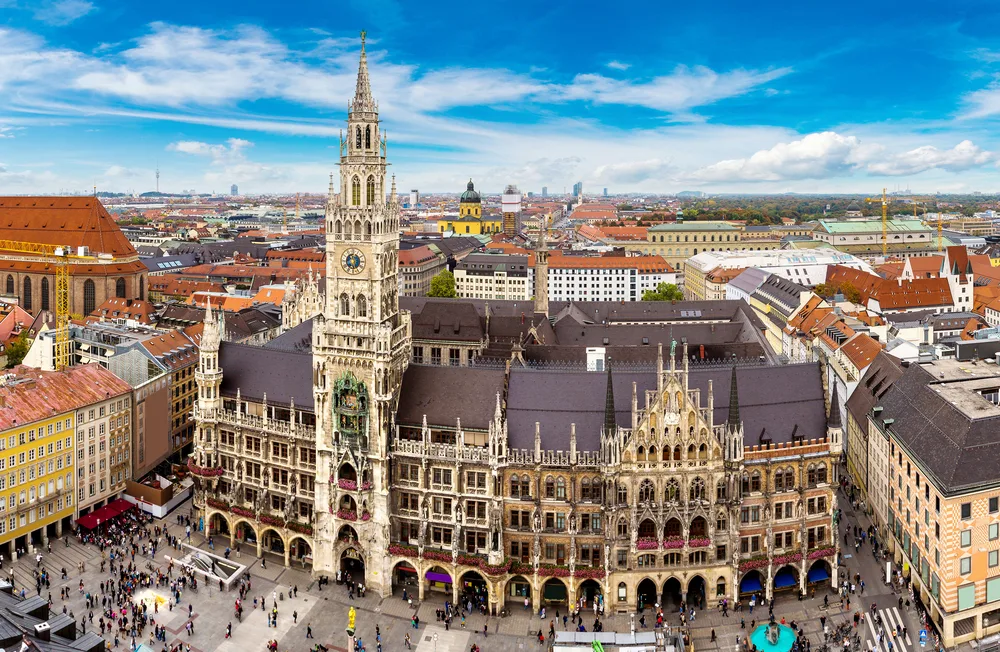
Munich
Arriving in Munich, you would be forgiven for thinking you were on the set of a movie about old Bavaria. At the Old Town beer halls, barmaids laced in dirndl dresses serve up frosty Helles lager, as oom-pah music drifts across the Marienplatz square. Men in lederhosen and checked shirts merrily give toasts as they knock glasses, or steins, as they’re known here. They sit at tables laden with wurst sausage and giant pretzels oozing with herby butter. This is Germany’s Germany, a place where folk traditions never stopped, and the revelry doesn’t either. Even when it isn’t Oktoberfest, the town’s notorious beer-drinking celebration, Munich is always happy to show you a good time. Simply cast your eyes around the lavish, gilded banquet hall at the Munich Residenz, the 13th-century Wittelsbach palace. You’ll see Munich has been impressing guests for centuries. Or, swing by the BMW Museum and check out the classic German cars. They even let you sit inside to test out the new models. At the city’s English Gardens, surfers ride waves on one of the park’s rivers. Munich is filled to the brim with this kind of pure-hearted German fun.
Read More
Learn About Munich
Build Munich Trip

Salzburg
You've probably heard this before— the city of Salzburg is straight out of a fairytale. Nestled in the mountains, this romantic city's Baroque architecture with colorful domes and spires is especially striking against the ancient fortress and Austrian Alpine backdrop. If you're looking for an amazing view, climb up to Hohensalzburg Fortress, Central Europe's largest intact fortress, for a jaw-dropping panorama of the city backed by misty mountains. Perhaps most famous for being the birthplace of the renowned composer Wolfgang Amadeus Mozart and the filming location for the classic The Sound of Music, this city has much to offer. Salzburg has become an important artistic and cultural center, featuring magnificent concert halls that uphold the city's tradition of classical music every day of the year, as well as acclaimed art exhibitions and museums. If you do it right, your visit to Salzburg will immerse you in the city's unforgettable atmosphere and keep you coming back for more.
Read More
Learn About Salzburg
Build Salzburg Trip
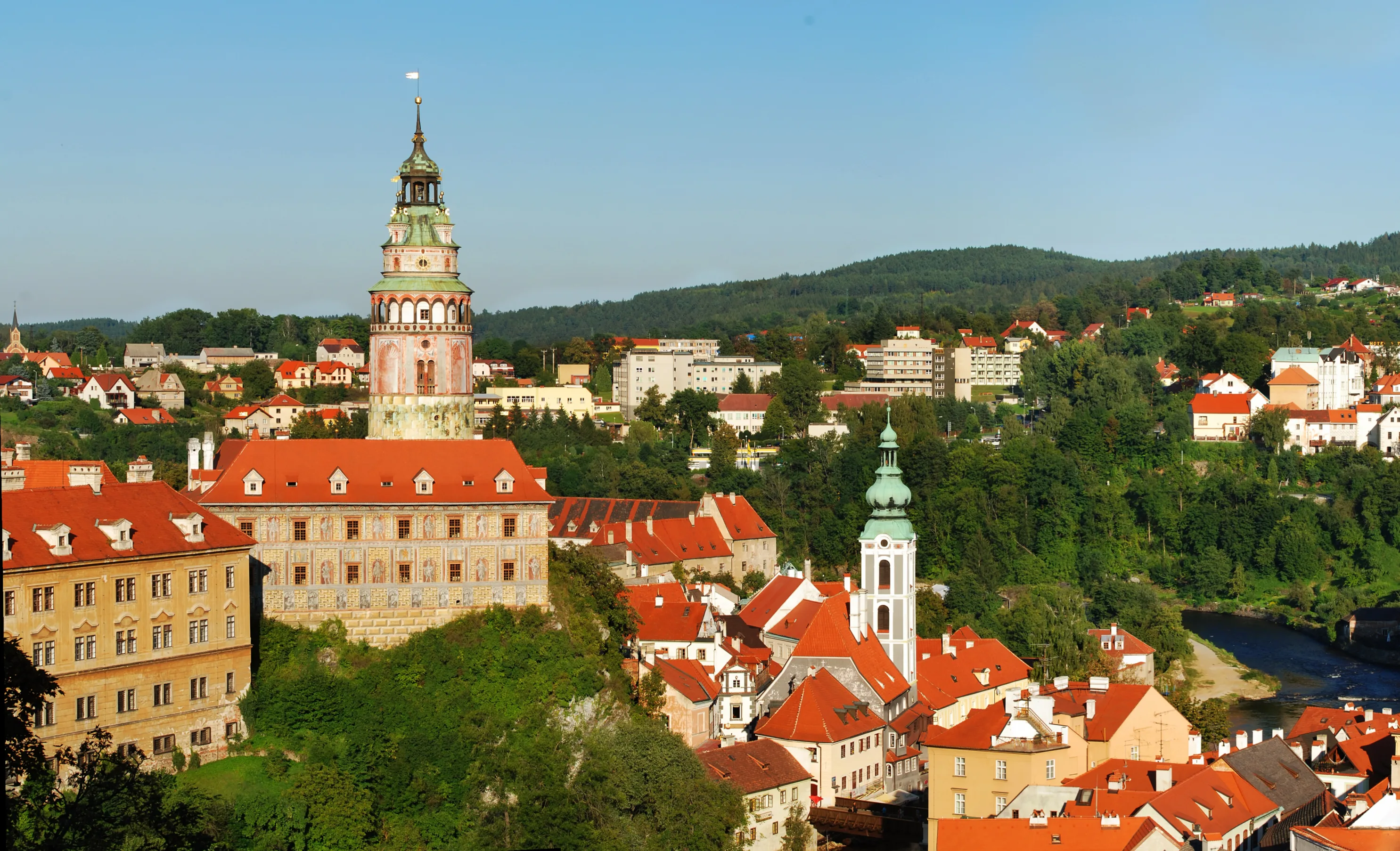
Cesky Krumlov
Cesky Krumlov is a charming little town in South Bohemia. It might be small, but it’s full of whimsical character and mystery. Walking through the narrow streets and across the bridge, the views of the medieval Cesky Krumlov Castle will take your breath away. At night, street musicians serenade visitors on the bridge where you can dance beneath the stars and the watchful eye of the magnificent tower. Dozens of unique local artisan shops, cafes, and restaurants are woven among the winding streets. In the summer, the city is lush with life and greenery. Rafters race down the river, stopping in the center along the way to enjoy a hearty meal before continuing their journey. In the winter, the main square transforms into a magnificent Christmas market and light blankets of snow cover the rooftops. This quaint little town will exceed your expectations and you may never want to leave.
Read More
Learn About Cesky Krumlov
Build Cesky Krumlov Trip

Nuremberg
One of the most authentic, storied German destinations, Nuremberg's picturesque old town, glorious castle, and buzzing Christmas Market makes this city a time-true classic. The ideal gateway to old Bavaria, Nuremberg offers a primer in German history before you embark on the lovely journey through old Bavaria, known as the Romantic Road. Considered the capital of the Holy Roman Empire in the middle ages, Nuremberg would have felt like the center of the world as a procession of kings and emperors passed through its magnificent gates. When the German Renaissance came, Nuremberg was at its heart. Albrecht Dürer, the great German master artist, was born here, and Martin Luther called Nuremberg Germany's 'eyes and ears'. Skip forward a few centuries, and the city took a dark turn, as Nuremberg became a gathering point for the German National Socialists. Slightly outside of town, you can still find the Nazi Party Rallying Grounds, a sobering reminder of the not so distant past. If it all gets too heavy, you can end the day with a glass of rotbier (red beer) and mull it over. Nuremberg is a must-see for anyone who wants to delve into Germany's past.
Read More
Learn About Nuremberg
Build Nuremberg Trip

Frankfurt
Dubbed ‘Mainhatten’ for its glass highrises, financial prowess, and proximity to the Main River, Frankfurt offers a fascinating glimpse into the ‘engine room’ of Europe’s economy with an unexpected twist. Among the glass and steel buildings, the old-worldly Römerberg square will give you a double-take. The square’s 15th-century half-timbered houses, old statues, and church spires contrast dramatically against the modern 21st-century skyscrapers beyond. If you visit at Christmas, the Römerberg is truly special, aglow with the light of the tallest Christmas tree in Germany. The square fills with stalls selling handicrafts, and the air is scented with hot apple wine, honey, and cinnamon. Delve deeper into Frankfurt and you’ll find a substantial museum district, the Museumsufer (Museum Embankment). This area features a cluster of twelve museums on either side of Main River. This includes the Städel, home to Tischbein’s famous painting of renowned writer Johann Wolfgang von Goethe, one of Frankfurt’s most prestigious sons. The more time you spend in Frankfurt, the more you’ll discover a highly cultured city lurking beneath its glass facades. If you have the time, Frankfurt is certainly worth a second look.
Read More
Learn About Frankfurt
Build Frankfurt Trip

Heidelberg
Heidelberg is buried deep in the forests of southwest Germany. Flanking both sides of the Neckar River, Heidelberg's red and white baroque old town looks like something from a book of folktales. On the hillside above the town, you'll see the looming, tumbledown remains of Heidelberg's Gothic-Renaissance castle, Heidelberger Schloss. The subject of strange local legends, Heidelberg Castle was once home to knights, a famous court jester, and even a witch. It is said the first person who pulls out an iron ring embedded in one of the great doors will be the castle's true owner. Surely on your visit, it's worth a try? Across the river, follow in the footsteps of scholars on a hiking trail known as The Philosophers’ Way. Heidelberg University is the oldest in Germany, and its leafy, temple-like campus contributes to the gentle, contemplative atmosphere of the town. A poetic city with the dreamy feel of a watercolor painting, it's no wonder Heidelberg inspired writers like Mark Twain and Johann Wolfgang von Goethe. The city has even been recognized by UNESCO as a City of Literature. Especially on misty, grey days, Heidelberg has a way of sweeping you up in its romanticism.
Read More
Learn About Heidelberg
Build Heidelberg Trip

Munich
Arriving in Munich, you would be forgiven for thinking you were on the set of a movie about old Bavaria. At the Old Town beer halls, barmaids laced in dirndl dresses serve up frosty Helles lager, as oom-pah music drifts across the Marienplatz square. Men in lederhosen and checked shirts merrily give toasts as they knock glasses, or steins, as they’re known here. They sit at tables laden with wurst sausage and giant pretzels oozing with herby butter. This is Germany’s Germany, a place where folk traditions never stopped, and the revelry doesn’t either. Even when it isn’t Oktoberfest, the town’s notorious beer-drinking celebration, Munich is always happy to show you a good time. Simply cast your eyes around the lavish, gilded banquet hall at the Munich Residenz, the 13th-century Wittelsbach palace. You’ll see Munich has been impressing guests for centuries. Or, swing by the BMW Museum and check out the classic German cars. They even let you sit inside to test out the new models. At the city’s English Gardens, surfers ride waves on one of the park’s rivers. Munich is filled to the brim with this kind of pure-hearted German fun.
Read More
Learn About Munich
Build Munich Trip

Salzburg
You've probably heard this before— the city of Salzburg is straight out of a fairytale. Nestled in the mountains, this romantic city's Baroque architecture with colorful domes and spires is especially striking against the ancient fortress and Austrian Alpine backdrop. If you're looking for an amazing view, climb up to Hohensalzburg Fortress, Central Europe's largest intact fortress, for a jaw-dropping panorama of the city backed by misty mountains. Perhaps most famous for being the birthplace of the renowned composer Wolfgang Amadeus Mozart and the filming location for the classic The Sound of Music, this city has much to offer. Salzburg has become an important artistic and cultural center, featuring magnificent concert halls that uphold the city's tradition of classical music every day of the year, as well as acclaimed art exhibitions and museums. If you do it right, your visit to Salzburg will immerse you in the city's unforgettable atmosphere and keep you coming back for more.
Read More
Learn About Salzburg
Build Salzburg Trip

Cesky Krumlov
Cesky Krumlov is a charming little town in South Bohemia. It might be small, but it’s full of whimsical character and mystery. Walking through the narrow streets and across the bridge, the views of the medieval Cesky Krumlov Castle will take your breath away. At night, street musicians serenade visitors on the bridge where you can dance beneath the stars and the watchful eye of the magnificent tower. Dozens of unique local artisan shops, cafes, and restaurants are woven among the winding streets. In the summer, the city is lush with life and greenery. Rafters race down the river, stopping in the center along the way to enjoy a hearty meal before continuing their journey. In the winter, the main square transforms into a magnificent Christmas market and light blankets of snow cover the rooftops. This quaint little town will exceed your expectations and you may never want to leave.
Read More
Learn About Cesky Krumlov
Build Cesky Krumlov Trip
prev
next


 Map of Your Itinerary Route
Map of Your Itinerary Route
Zoom In to the cities to see your itinerary in more detail


 4.8
4.8 







